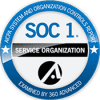The prevalence of behavioral health conditions in the United States is significant. The National Institute of Mental Health reports that nearly one in five adults lived with a mental illness in 2017, ranging from mild to moderate, to severe. The Substance Abuse and Mental Health Services Administration estimates that one in twelve American adults have a Substance Use Disorder and that about 45% have a comorbid mental health condition. And, the Health and Human Services Administration estimates that 2 million people had an Opioid Use Disorder in 2018.
Healthcare costs for individuals with comorbid physical and behavioral health conditions are two-three times higher than for those with just a physical health condition (Melek et.al., Milliman Research Report, 2017). Among commercially insured, Medicare, and Medicaid covered beneficiaries the projected additional healthcare costs are estimated at $406 billion in 2017.
Remarkably, these additional costs for individuals with physical and behavioral health comorbidities are largely attributed to additional medical rather than behavioral health services. It is also estimated that between almost 10% and 20% of these costs can be successfully reduced by effective integrated physical and behavioral health care.
The staggering impact of comorbid physical and behavioral health conditions challenges the question of what can and should be done to improve health outcomes for these individuals. There is a long history of stigma, discrimination and bias against those with behavioral health conditions. Stereotypes abound, and those with the most severe illnesses are disadvantaged in social, legal, and financial circumstances.
Unfortunately, health care systems have also helped to perpetuate the disenfranchised status of those with behavioral health conditions. This occurs when there are separate clinical delivery systems for behavioral care, and financial payments for these services may also be different. Health records are frequently maintained in separate systems of care, and privacy regulations (42CFR Part2) for substance use patients also inhibit the flow of necessary clinical information among providers. In publically funded behavioral care, service systems are developed to treat the most severely ill outside of the general healthcare mainstream.
A number of strategies and initiatives have been promoted to better integrate physical and behavioral healthcare services. These include collaborative care models which have been developed to foster behavioral health consultation and care management for primary care physicians; specialty behavioral health and primary care provider co-location; and, integrated models of health homes and Certified Community Behavioral Health Centers (CCBHC). Accountable Care Organizations (ACOs) and other risk bearing provider systems are recognizing the financial impacts of poorly coordinated physical and behavioral care. And, they are developing better risk modeling which supports the integration and coordination of services.
There is growing recognition that population health and individual well-being are influenced by the complex interactions of physical, behavioral, and social determinants. Providers and healthcare systems have faced significant challenges overcoming the fragmentation between these different systems of care. The fundamental question is what can and should be done to overcome this fragmentation and improve health outcomes?
Technology tools represent the best opportunity to eradicate this fragmentation, and better integrate the service systems that provide physical, behavioral, and social care. Electronic health records have improved communications among providers. However, these are generally closed record keeping systems that are confined to a defined set of providers. They generally fail to include the full spectrum of care team members that provide services across the physical, behavioral, and social care continuum. Care coordination technology tools are designed to provide a common platform for all care team members in order to establish care plans and successfully implement them together.
A comprehensive solution for integrating behavioral, physical, and social determinants of health requires person centered care planning tools. Population health analytics provide the necessary resources to identify and target those individuals that are at adverse risk of poor health outcomes. Care coordination and management resources support all members of the care team to collaboratively formulate and enact person-centered care plans. Five key principles of effective care teams have been described and include: shared goals; clear roles; effective communications; measurable processes and outcomes; and, team leadership.[1] Coordinated care technology and tools foster effective and efficient transitions across all levels of care and support engagement and activation for improved individual health behaviors. Additionally, quality; compliance; and reporting tools foster effective population health contract management.
As the healthcare ecosystem evolves and the goals of better and more efficient care of individuals produce improved health outcomes, technology tools are a vital piece of the solution. These tools and resources support the integration of the key elements of physical, behavioral, and social care. Understanding these key determinants of health and providing care teams the ability to collaborate, fosters better health outcomes, improved individual well-being, and greater satisfaction among providers.
1 ( Mitchell P, Wynia M, Golden R, McNellis B, Okun S, Webb CE, et al. Core Principles and Values of Effective Team-Based Health Care Discussion Paper. Washington, DC: Institute of Medicine; 2012.)








